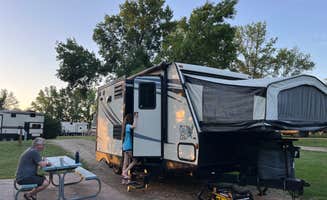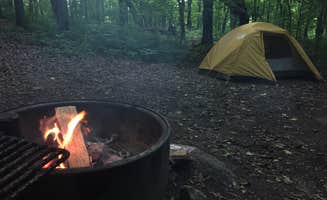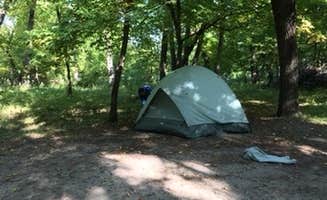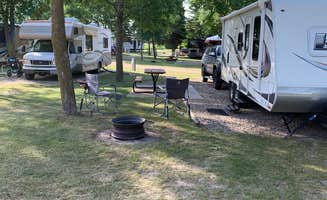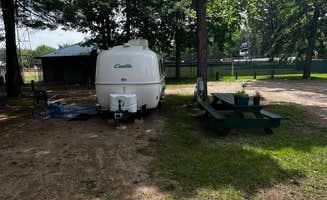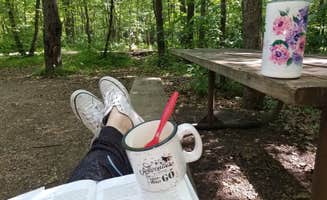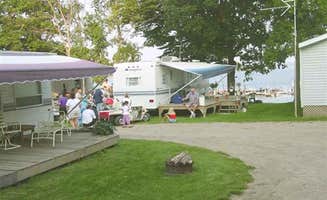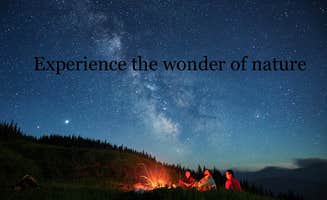Campgrounds near French, Minnesota range from secluded lakeside spots to accessible wooded areas across western Minnesota's prairie and lake country. The region features an average elevation of 1,300 feet and receives approximately 24 inches of annual precipitation. Summer temperatures typically range from 60-85°F, creating favorable conditions for both tent and RV camping from May through September.
What to do
Hiking and biking trails: Maplewood State Park Campground offers extensive trail networks with varied terrain. "Easily a contender for best hiking trails in the MN state parks state system. This western park offers miles of hiking with the North Country Trail weaving throughout," notes one visitor. The park maintains both wooded paths and prairie sections.
Fishing opportunities: Multiple lakes provide excellent fishing options without motor noise at Glendalough State Park Campground. "Small park but still a great place to get outdoors for the day. No motors allowed on the lakes, so canoeing, kayaking and fishing are great," reports a camper. The park's restrictions on motorized boats create a quieter fishing environment.
Water activities: Several campgrounds offer water recreation beyond fishing. "From the sandy beach and wooded trails to the games and activities, there was energy and thought behind every corner," explains a visitor to Swan Lake Resort. Paddle sports are particularly popular across the region's interconnected waterways.
What campers like
Private, secluded sites: Tipsinah Mounds City Park receives high marks for its site arrangements. "Tent sites right by lake. Great for fishing and all types of water sports. Not far from the MN Central Lakes Bike Trail," shares one camper. The park features both lakefront and wooded sites.
Clean facilities: Visitors consistently mention well-maintained bathrooms. "Great facilities, a nice state park close to Fargo, but overall plain and skippable unless you want something close by," notes a camper at Buffalo River State Park Campground. Newer shower facilities include dishwashing stations at several campgrounds.
Fall colors: The region transforms during autumn. "Lots of maple tree's red,orange colors in fall," observes a Maplewood State Park visitor. This seasonal display makes September and early October among the most popular camping periods in western Minnesota, especially for photographers and hikers.
What you should know
Seasonal accessibility: Most campgrounds operate with limited services during colder months. "Stayed in mid September and almost had the park to ourselves. Good road in and level sites. Electric is dated but functional," reports a visitor to Delagoon Park Campground. Shoulder season camping offers greater solitude but fewer amenities.
Water quality concerns: Some campgrounds draw water directly from wells. "Park is in the city but looks like the water coming from the spigots are pumped straight from the ground with no filtering at all. Water was a disturbing reddish brown color that instantly stained my sinks, toilets, etc," notes one camper. Bringing drinking water is advisable for certain locations.
Reservation systems vary: While state parks use a centralized reservation system, city and county parks often operate differently. "Registration is first come first serve via a self serve kiosk at the campground entrance," explains a visitor regarding local procedures. Some smaller campgrounds cannot be reserved in advance.
Tips for camping with families
Yurt accommodations: Beers Hike-In Site provides an entry-level backpacking experience. "Great backpacking site to take your family. Take the Maplewood church road into the site. There is enough room to park 1 (maybe 2) vehicles. The walk is an easy walk," shares a visitor. This offers a compromise between tent camping and cabin stays.
Swimming areas: Several lakes feature designated swimming zones with sandy bottoms. "The swimming area is wonderful! Less chlorine than you'd ever get exposed to in a public pool and picnic table access with lots of area to picnic," notes a Buffalo River State Park visitor. Most swimming beaches lack lifeguards, so supervision remains essential.
Educational opportunities: Wildlife viewing and historical sites add educational components. "There's also an old house/museum where the former owner of the land lived. Apparently a few presidents visited there during the turn of the century," explains a Glendalough State Park visitor. Many campgrounds offer junior ranger programs during summer.
Tips from RVers
Site dimensions: Larger RVs face limitations at some of the best places to camp near French, Minnesota. "Sites very short and only a couple are remotely level," reports a Delagoon Park camper. Most state park campgrounds accommodate units up to 60 feet, while city parks often have shorter maximum lengths.
Hookup variations: Electric service ranges from 20 to 50 amp depending on location. "We only stayed here overnight but the sites were open and spacious. Hosts were very friendly and helpful. Full hookups," notes a Swan Lake Resort visitor. Water and sewer connections remain less common than electric hookups throughout the region.
Dump station access: Not all campgrounds with RV sites offer on-site dump stations. "No on-site dump station, have to go to a gas station a few miles down the road and pay $5," explains a camper, highlighting the need to plan for waste disposal when visiting the region's smaller camping areas.


